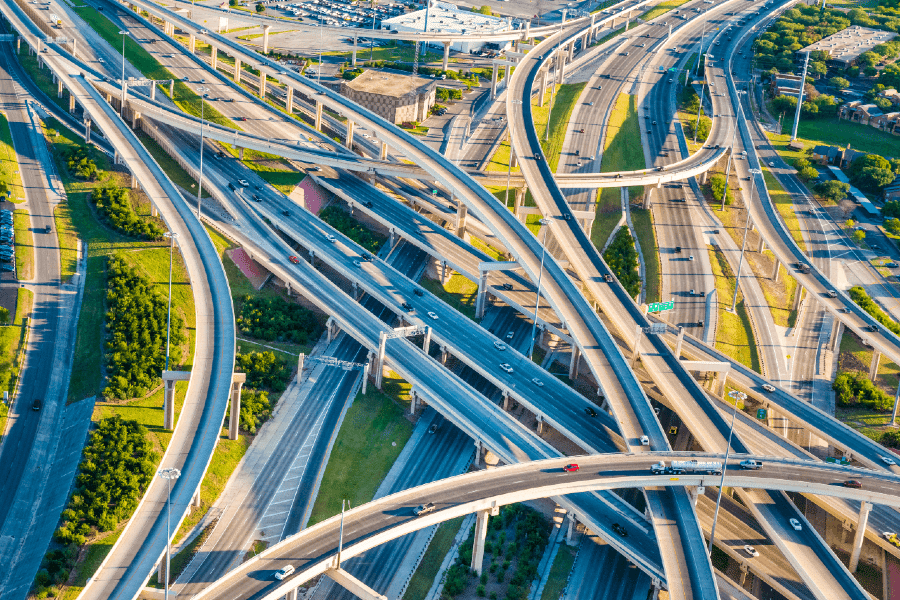Safely Navigating the Most Dangerous Roads & Intersections in San Antonio, TX

While there is no foolproof way to prevent all car accidents, the best strategy for reducing your risk of a crash is to stay focused on driving. This is particularly important when you are approaching and passing through intersections.
San Antonio has many dangerous intersections where there is a higher risk of a crash. Below, our San Antonio auto accident lawyers discuss some of the most dangerous intersections in the city and surrounding county and how fault may be assessed for accidents that happen.
We also discuss practical steps every driver can take to help lower the risk of a crash when passing through these intersections.
Crash victims can schedule a free consultation with our firm. There are no upfront fees or obligations, which means calling us carries no risk to you. We have recovered millions on behalf of our clients.
9 High-Risk Intersections in San Antonio
Crashes can happen anywhere, but there are some intersections that put motorists at increased risk of an accident. In Bexar County, 40 percent of injuries occurred in intersections, which is slightly higher than Texas as a whole. This is according to state crash data and analysis done by 1point21 interactive.
Some of the most dangerous intersections are those involving Loop 410 and Loop 1604. In 2012 alone, there were 469 accidents where loop 410 intersects with Loop 1604, according to the Texas Department of Transportation.
Some of the most dangerous intersections in the San Antonio area based on the number of crashes include (this is based on data from the Texas Department of Transportation, San Antonio Express News and data analysis from 1point21 Interactive):
Highway 151, Loop 410
There were 65 crashes and 38 total injuries at this intersection in 2020.
Bandera Road and Loop 1604
In 2020, there were 51 crashes that caused 37 injuries. Between 2012 and 2015 there were a total of 266 crashes here that caused 92 injuries. There has been rapid development in this area for several years, which increases traffic, potentially leading to more accidents.
Loop 410 and San Pedro Ave
This intersection saw 52 crashes and 32 injuries last year. This is one of many dangerous intersections involving Loop 410.
I-10 and Loop 1604
In the three years between 2012 and 2015, there were 215 crashes, 152 injuries and one death in this intersection. In 2020 alone, there were 60 crashes, 26 injuries and three suspected serious injuries. This is in the area that has seen rapid development in recent years. Many of the fatal crashes that occur in this area and throughout Bexar County are caused by drunk driving and construction.
Loop 410 at Rigsby Ave
From 2012 to 2015, there were 145 crashes and 66 injuries at this intersection. The trend has continued, as there were 52 crashes that resulted in 28 injuries in 2020. That is about the average number of crashes per year between 2012 and 2015.
Loop 410 and Marbach Road
This intersection saw 51 crashes that caused 19 injuries in 2020 alone. Between 2012 and 2015, there were 129 crashes at this intersection.
Ingram Road and Loop 410
While there was an average of nearly 70 crashes per year between 2012 and 2015, there were 35 crashes in 2020 that resulted in 18 injuries.
Culebra Road and Loop 410
There were 38 crashes that caused injuries in 2020, while there was a total of 133 crashes between 2012 and 2015.
Interstate 10 at Wurzbach Road
There were 87 crashes between 2012 and 2015 and 39 crashes that caused 14 injuries in 2020.
How is Fault Assessed for These Crashes?
Every crash is different, which is why it is important to review the situation with a licensed attorney in a free consultation. There are many factors to consider, such as:
- Who had the right of way?
- Was one driver speeding?
- Were either of the drivers distracted?
- Did one driver merge too quickly?
- Did one driver fail to yield the right of way?
Merging can be particularly dangerous when exiting and entering interstates and other multi-lane highways. Under Section 545.061 of the Texas Transportation Code, you are required to yield to traffic to your left when entering a lane from the right – if you are on a roadway divided by three or more lanes for traffic that is heading one way.
As a merging driver it is your duty to slow down or come to a stop until it is safe to merge. Drivers already on the highway may slow down to allow you in, but that is not their duty.
Exercise caution when exiting the freeway, as you cannot count on other drivers to be paying attention. Do not assume other drivers see you or that they will slow down. They have the right of way, so it is up to you to make sure it is safe to go.
Drivers are often negligent when making turns. Either they try to go when it is not safe, or they fail to do a thorough look at oncoming traffic. They even do this in high-traffic areas, as they may feel pressure to make the turn or risk angering the drivers behind them.
Lorenz & Lorenz Accident & Injury Lawyers PLLC is Here to Help. Call Today
If you have questions after a car crash, call the experienced attorneys at Lorenz & Lorenz Accident & Injury Lawyers PLLC. We have helped numerous crash victims over more than 20 years. We know how to build a strong case to help you pursue maximum compensation.
The initial consultation is free, and we are not paid unless you receive compensation.
